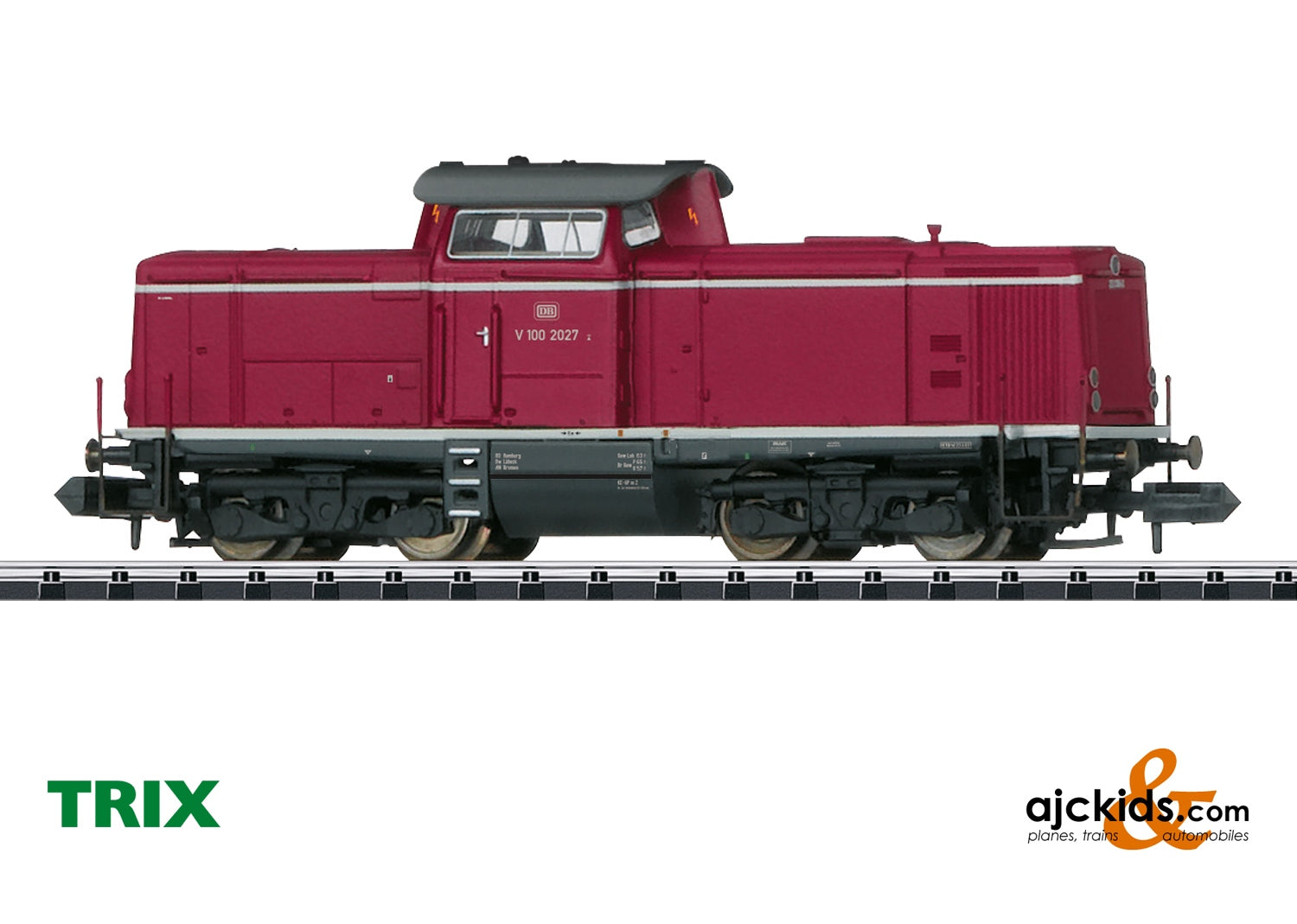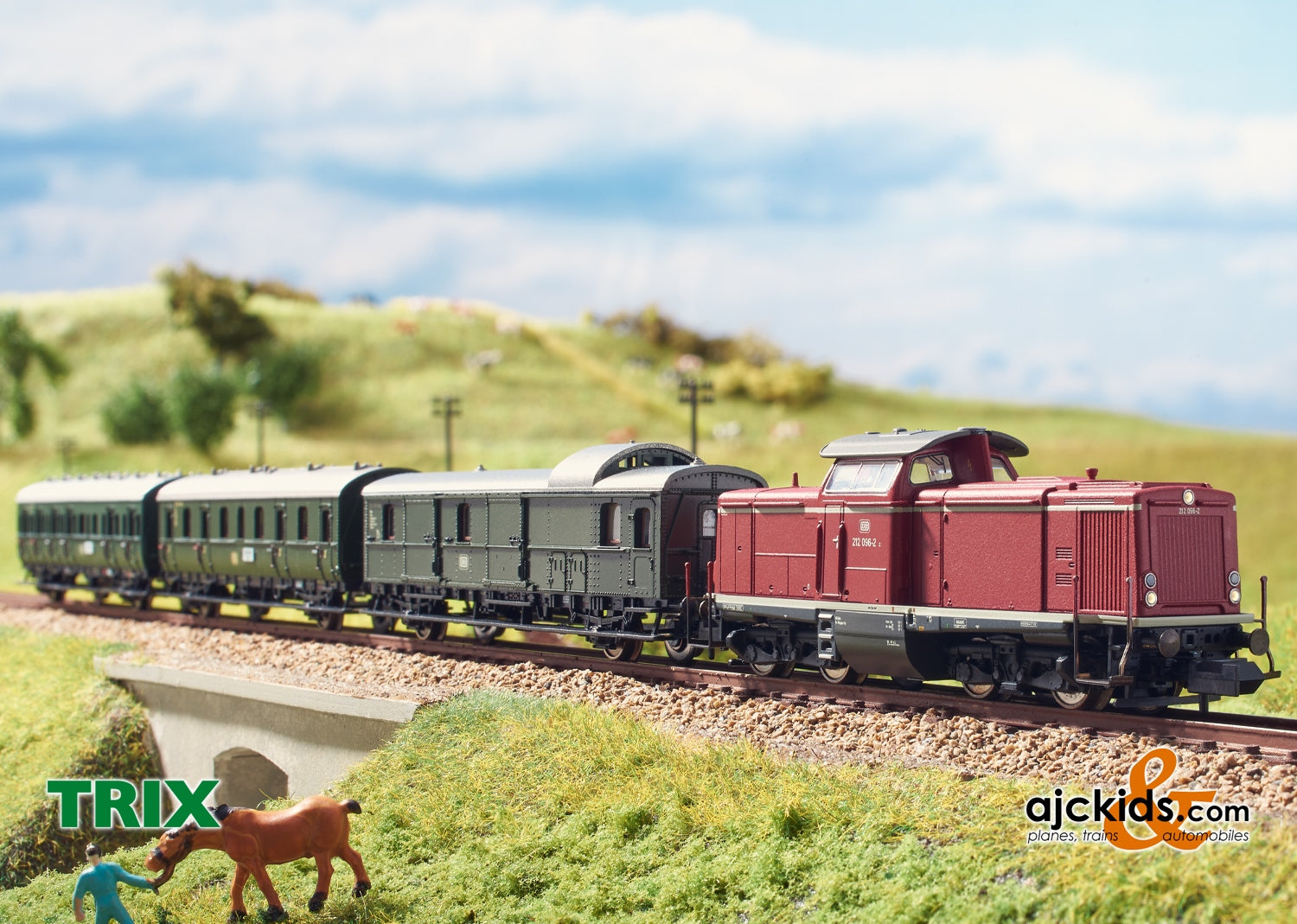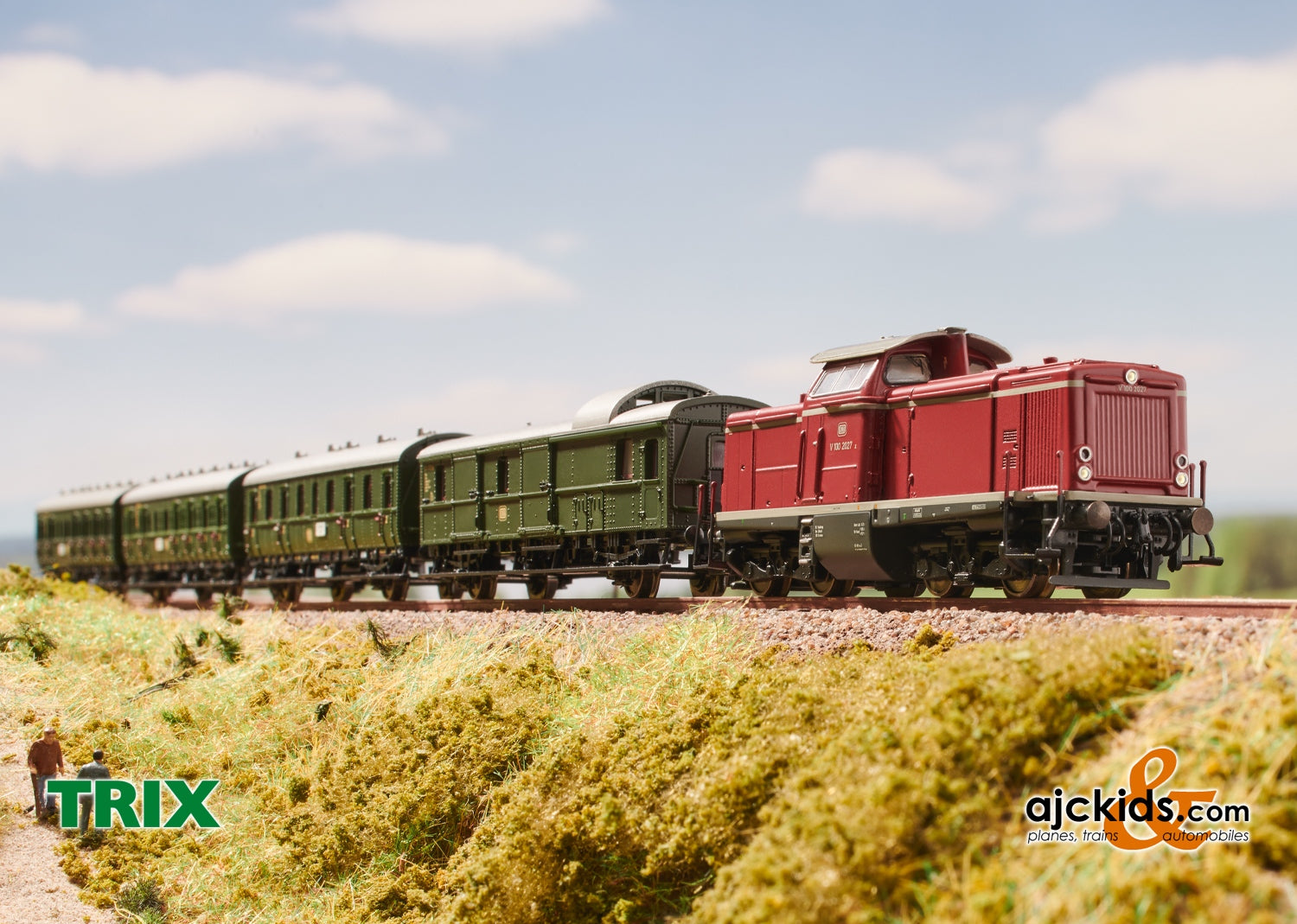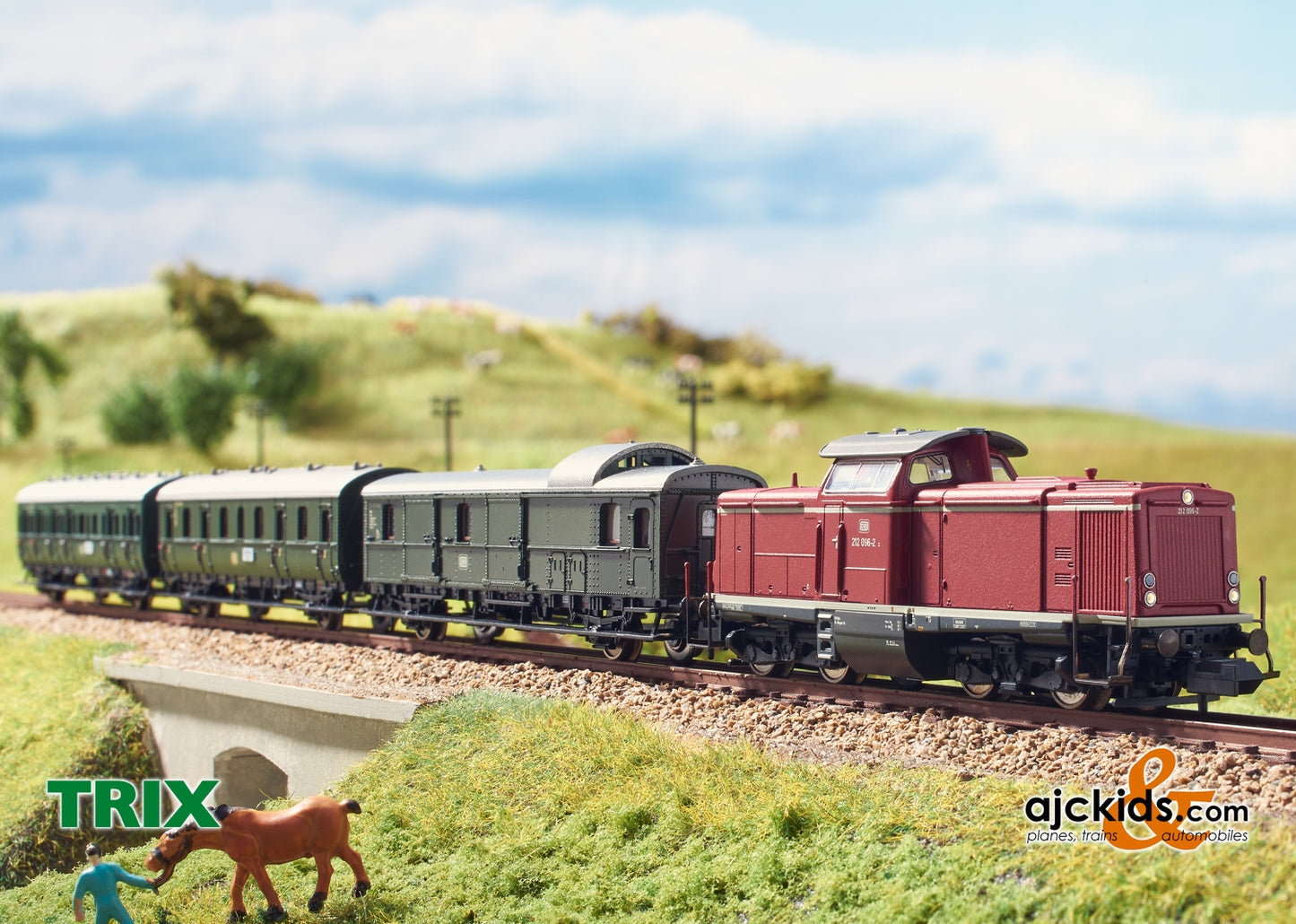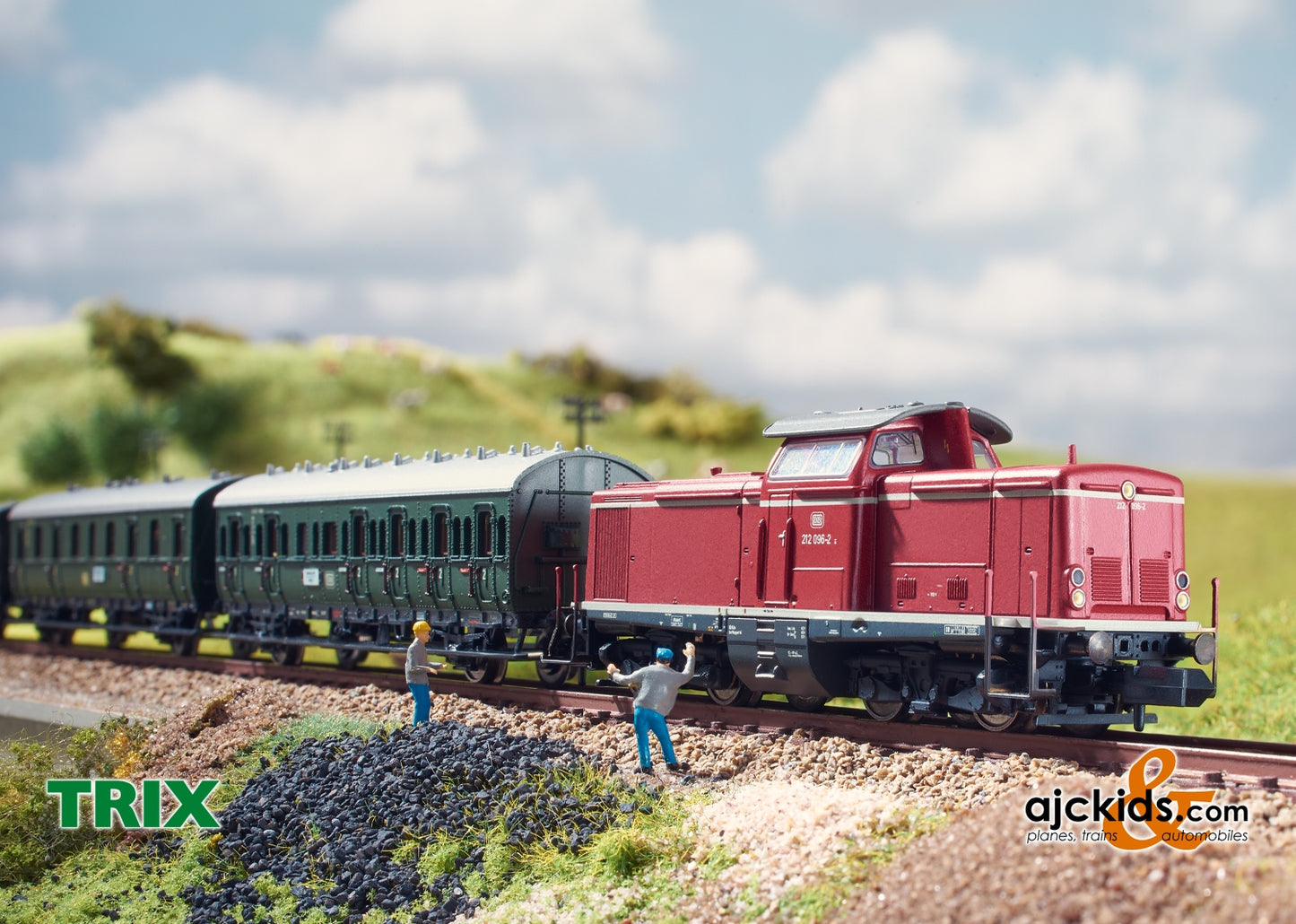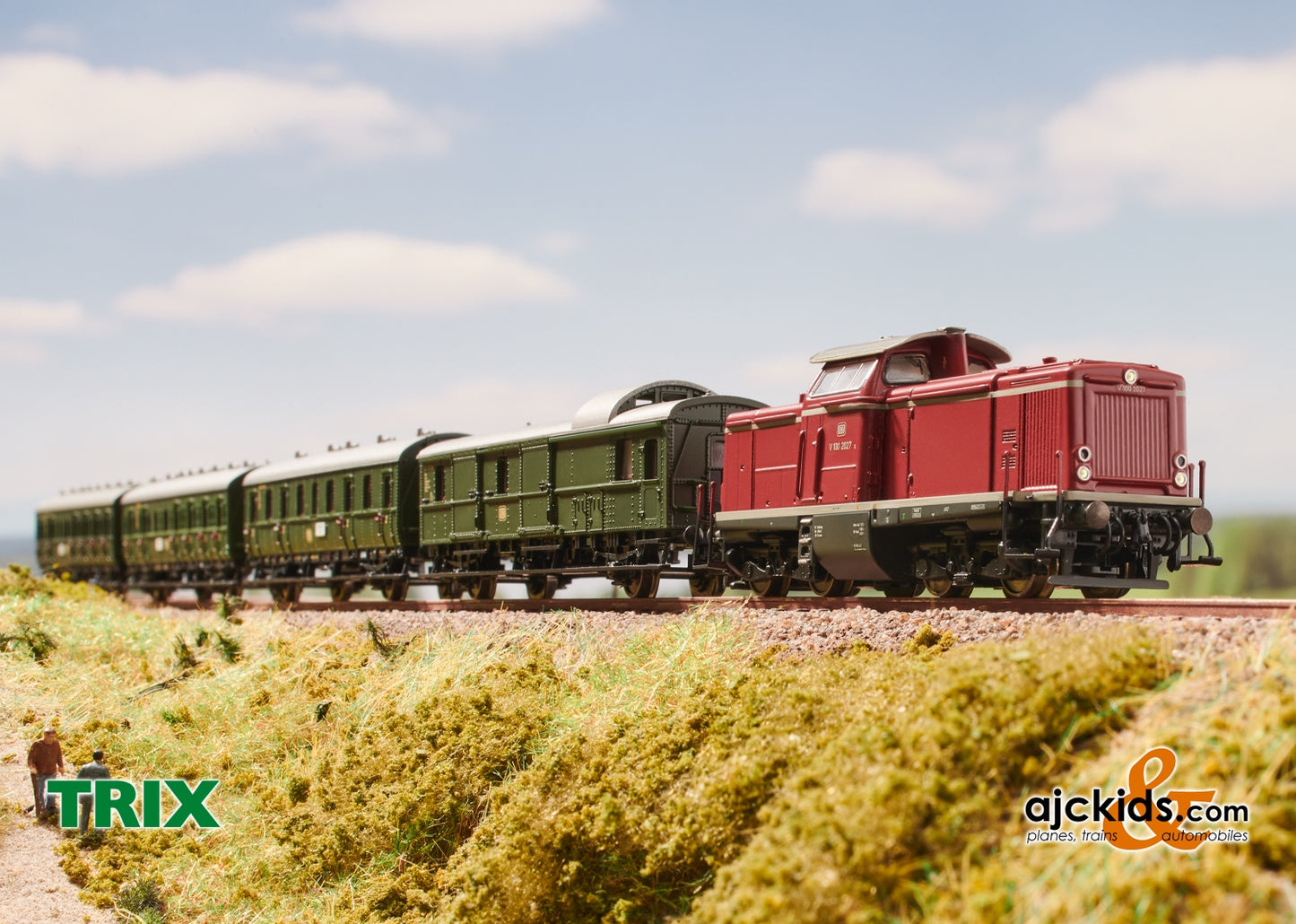Trix 16124 - Class V 100.20 Diesel Locomotive
Prototype: German Federal Railroad (DB) diesel locomotive, road number V 100 2027. Version in Era III crimson. Use: Passenger and freight trains.
Highlights
- Metal body and frame
- Warm white LEDs for lighting
- Cab lighting
- Digital sound with many functions
Product description
Model: The locomotive has a digital decoder and a smoke unit for operation with mfx and DCC. The motor has a flywheel. 4 axles powered. Traction tires. The triple headlights and dual red marker lights change over with the direction of travel and can be turned off. There are separately applied grab irons.
Length over the buffers 75 mm / 2-15/16
One-time series.
Publications
- Neuheiten-Prospekt Minitrix 2024Prototype information
The class V 100 diesel locomotives were developed in the Fifties initially as a replacement for the class 64 and 86 steam locomotives, and they were planned for light service on main lines and mixed use on branch lines. The V 80 served as a prototype, but the new locomotive was to be clearly more affordable. In cooperation with the railroad's BZA central office in Munich, MaK in Kiel was given the contract to develop the locomotive. In the late fall of 1958, Mak delivered five advance locomotives, road numbers V 100 001-005 (later V 100 1001-1005, starting in 1968: 211 001-005) with 1,100 horsepower motors as well as road number V 100 006 (later V 100 2001, starting in 1968: 212 001), which was given a 1,350 horsepower motor. In 1961/62, came the order of 20 advance locomotives of the class V 100.20 with the more powerful 1,350 horsepower motor as a "lightweight main line locomotive".
Between 1963 and 1966 German locomotive builders delivered two series with a total of 360 units of this more powerful variant. In 1965, ten units (V 100 2332-2341) were developed on the side from the last series for use on the steeply graded line Rastatt – Freudenstadt, and they were equipped with hydrodynamic brakes. Characteristic for the V 100 was its squared off shape, which was clearly borrowed from the V 60. The motor performance was transmitted using an elastic coupling and a cardan shaft to the hydraulic Voith transmission, which allowed the locomotive to run by means of a stepped drive at main line speeds (max. speed 100 km/h / 63 mph) or at switching speeds (max. speed 65 km/h / 40 mph). The trucks were a new design of welded pipe construction, on which the wheelset steering was mounted using Silent blocs. There was good access externally using a hood-shaped sliding door to the machine equipment in for the front, longer hood area. These units ran as general-purpose locomotives pulling lightweight and mediumweight passenger, limited stop fast trains, and freight trains on main and branch lines.
In 1968, the class V 100.20 was given the computer-generated class designation 212, the locomotives for steep grades ran as the class 213. Starting in the mid-Nineties, they were used considerably less. Their storage at the freight service division of the DB AG (railion) took place in December of 2004. Retired locomotives for the most part were not scrapped. Most of them were sold by locomotive dealers. Many are still used by track laying firms in France and Italy. German private railroads and foreign state railways were and still are thankful recipients of the V 100.20 (212). Even the DB cannot do without these proven units entirely. Twelve remotored units run today in service at DB Vehicle Service, Inc. and six 212/213 units can be found at the DB Construction Group, Inc. Fifteen units are available converted to the class 714 of the DB Network Emergency Technology unit and serve as motive power for rescue trains used chiefly for emergency service on new construction rail lines.
Features
Warning
| DCC | SX2 | SX | MFX | |
|---|---|---|---|---|
| Headlight(s) | X | X | ||
| High Pitch Horn | X | X | ||
| Diesel locomotive op. sounds | X | X | ||
| Engineer’s cab lighting | X | X | ||
| Direct control | X | X | ||
| Sound of squealing brakes off | X | X | ||
| Rear Headlights off | X | X | ||
| Low Pitch Horn | X | X | ||
| Front Headlights off | X | X | ||
| Station Announcements | X | X | ||
| Conductor's Whistle | X | X | ||
| Brake Compressor | X | X | ||
| Blower motors | X | X | ||
| Letting off Air | X | X | ||
| Bell | X | X | ||
| Special sound function | X | X | ||
| Sanding | X | X | ||
| Doors Closing | X | X | ||
| Horn | X | X | ||
| Replenishing fuel | X | X | ||
| SIFA warning sound | X | X | ||
| Horn blast 1 | X | X | ||
| Doors Closing | X | X | ||
| Station Announcements | X | X | ||
| Station Announcements | X | X | ||
| Station Announcements | X | X | ||
| Diesel Heating Engine | X | X | ||
| Rail Joints | X | X | ||
| Sound of Couplers Engaging | X | X | ||
| Headlight(s) | X | X |

